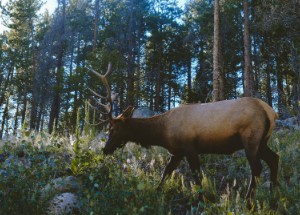Deer can be a serious problem for those whose areas are located near the forest. If you grow vegetables and fruits, it is likely they will attract animals. In addition to massive damage to your crops, they can cause even greater harm to your health. It is known that deer defecate 10-15 times a day.
If an animal is sick, a deer poop is a huge danger to pets, farm animals, and humans. If you want to know how to recognize their feces, why they are dangerous, and how to remove them, you’ll find all the info you need below.
Deer Droppings Removal Guide
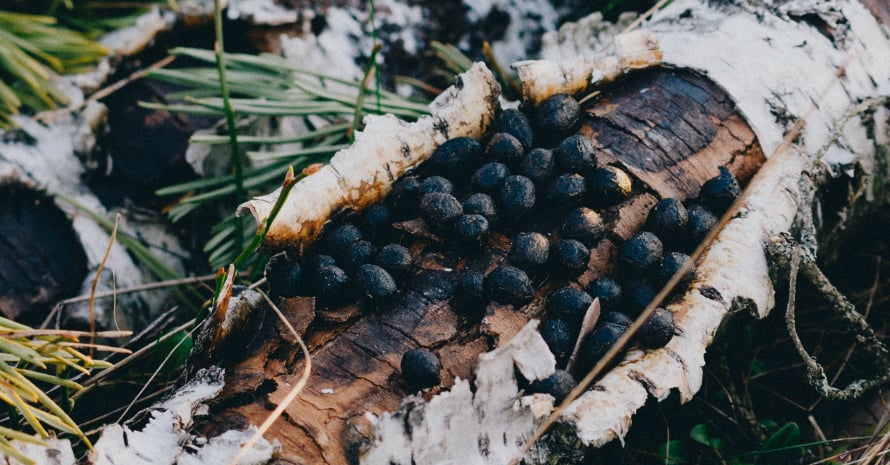
Deer are very gluttonous creatures and are considered the record holders for the amount of damage to agriculture. However, not only do they pose a danger but also their waste.
Deer scat identification
As I said, on average, deer poop 10-15 times a day, but in spring and summer, when plants are incredibly juicy, this figure can increase up to 20-30 times daily. Imagine what a mess they will make your garden! In deer poop pictures, you can see some pretty impressive piles of poop.
Females have up to 60 pellets in one session, while males can have up to 80. Moreover, they defecate right in the same places where they eat, that is, in your backyard.
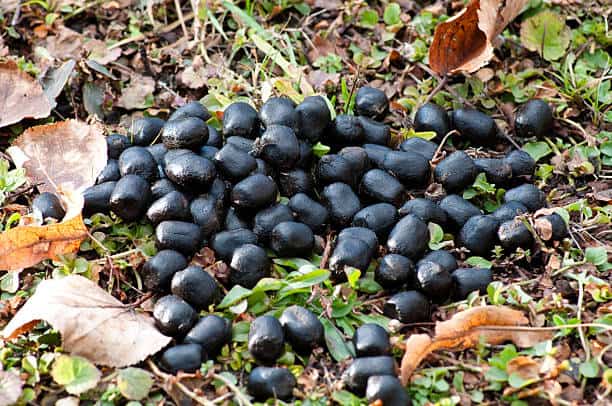
So, what does deer poop look like? Feces usually have a rounded granule shape; occasionally, they are slightly elongated. Since deer are herbivores, their wastes decompose rather quickly. On the first day, they are smooth, shiny, and have a dark color. Then they dry up, brighten, acquire a fibrous structure, and crack.
Sometimes you can see pieces of undigested nuts, corn, oats, and even small twigs in them. They resemble the feces of goats, hares, squirrels, and rabbits in their shape, but they are somewhat larger in size (up to 1 inch). Take a good look at the photos of deer feces to understand what you are dealing with.
Deer scat threat
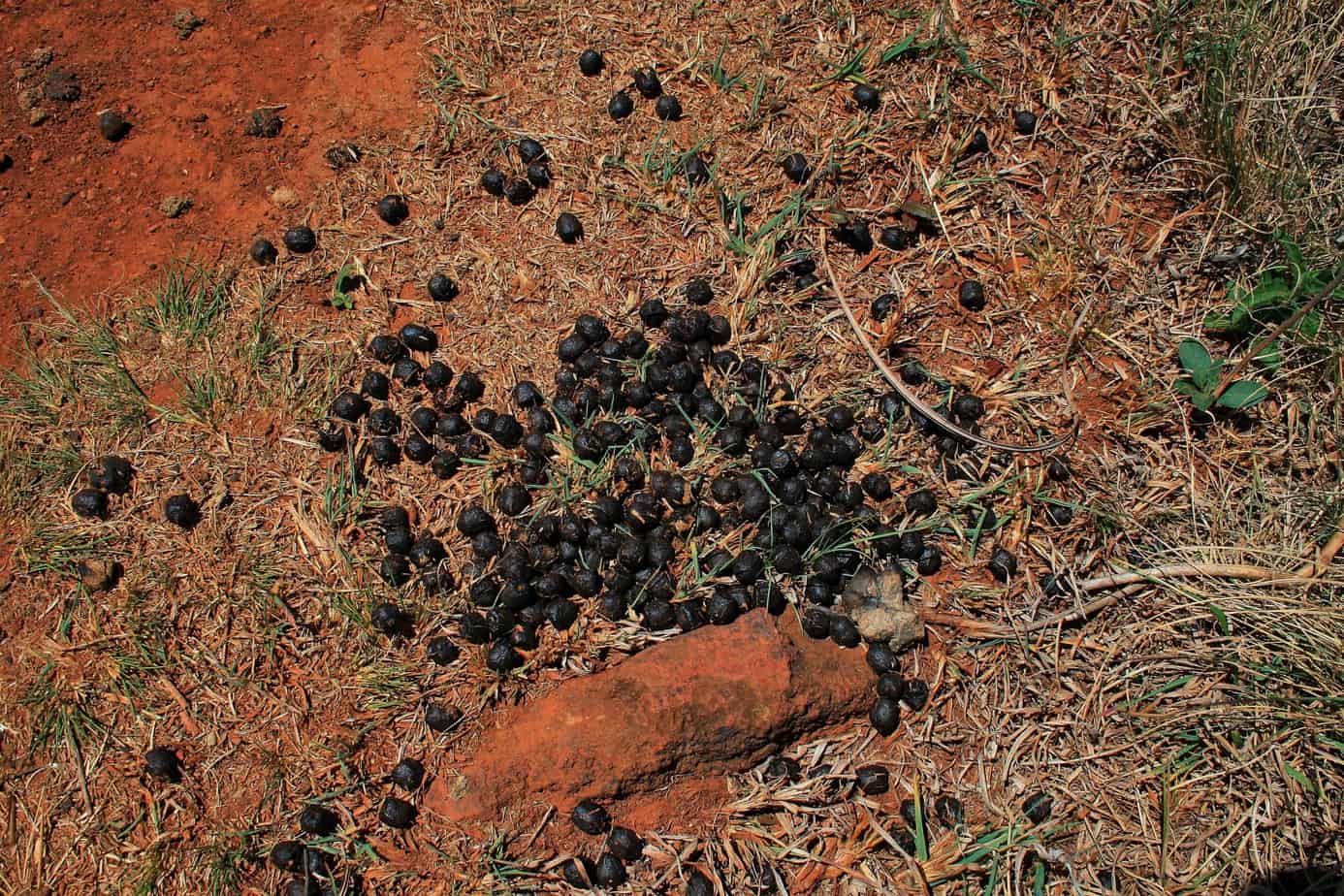
Since wild animal feces can contain disease-causing parasites, it is not recommended for humans to contact them directly. Is deer poop dangerous? My definite answer is yes!
Among the dangerous diseases that are transmitted through scat, it is worth highlighting Chronic wasting disease (or abbreviated CWD) caused by prions. It affects deer brains, causing an animal to lose weight, coordination, move poorly, and subsequently die.

At the moment, it’s unknown whether humans can become infected, but pets and farm animals are at risk. But different types of Escherichia coli can easily infect people. Bacteria can enter our body through contact with feces and urine or even while swimming in a muddy pond near which deer live.
Dicrocoelium dendriticum infections affect the biliary tract, liver and can even cause cirrhosis in ungulates and mammals, including humans. Eggs of these parasites can be clearly seen on deer droppings pictures. Another disease, Fasciolosis, has a similar effect on animals. In humans, it causes urticaria, ascites, anemia, jaundice, and hepatitis.
Cleaning deer turds
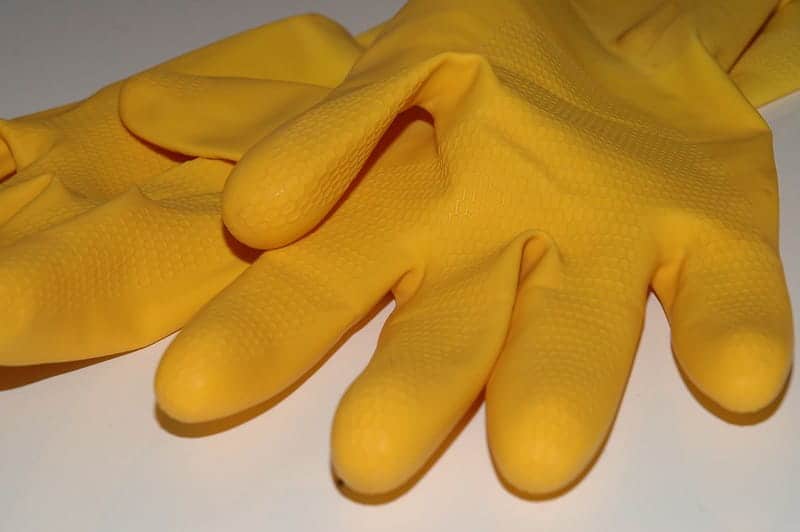
Many gardeners use feces as fertilizer. I highly discourage doing this since you cannot know for sure that a deer who has visited you isn’t sick in any way. It is best to remove them from your flower beds to avoid spreading diseases.
Safety measures
As with any wild animal feces, extreme caution should be exercised when cleaning deer excrements. Before starting work, put on old clothing that will completely cover your arms and legs. It is also recommended to wear rubber boots and disposable gloves. Use a respirator and goggles as extra protection.
Disposal
Never remove deer feces with bare hands. Use an inverted bag or, better yet, a shovel. The easiest way to get rid of them is to seal them up and throw them in the trash. However, if you have the appropriate hardware, you can hot-compost it. The collected material should be processed for at least a week at a temperature not lower than 140°F.
Upon completing work, be sure to wash your clothes in hot water with detergent, pack and discard disposable items hermetically, and treat your shovel and boots with boiling water. If poop comes into contact with edible plants, unfortunately, you will have to destroy them.
Infestation
The appearance of deer near your site is hard to miss. Even if you do not see animals themselves, you will definitely find traces of their appearance with ease. Deer damage includes gnawed trees, broken branches, eaten fruits, vegetables, and young plant shoots.
Besides, these animals tend to scratch on tree trunks so that pieces of their fur can catch on a bark. On the ground, you will see a huge variety of hoof prints and, of course, piles of poop.
Deer are especially active in spring and summer when they gain access to food after a hungry winter. It is then that the amount of destruction and the volume of feces increase (it is noticeable in some deer poop images).
FAQs About Deer Poop in Yard
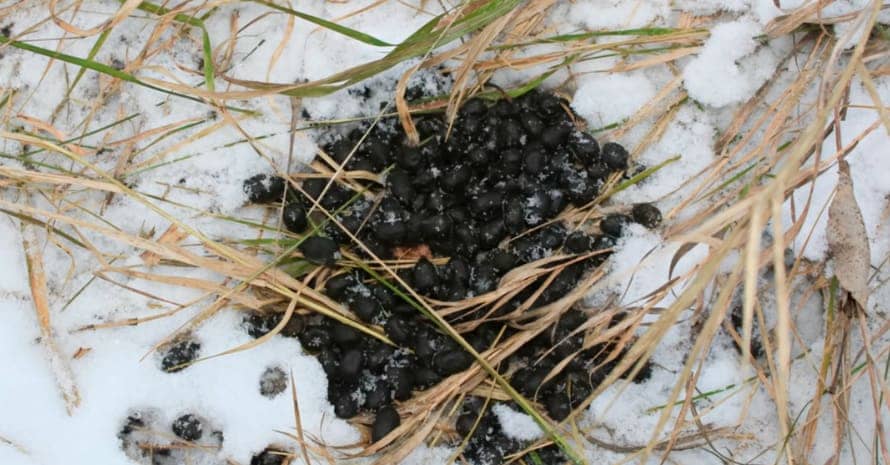
This section contains answers to common questions about deer feces.
Why do dogs roll in deer poop?
It may be due to their instinctive desire to mask their own scent since wolves, their ancestors, did it while hunting. Or they want to absorb extraneous odors to “tell” the relatives where they have been.
What happens if a dog eats deer poop?
It’s simple: if a dog does it, it will get sick with diseases that a deer had (if any). At the same time, it is highly likely that a pet’s owner will also get sick after contact with it.
Is deer poop a good fertilizer?
In theory, yes. Deer are herbivores, so their feces contain a lot of nutrients and fermented plant debris. However, if a deer was sick, burying its poop in the ground will spread the disease throughout your area.
Handle Deer Excrements With Care
Although it is not always possible for wild animals to be infected with dangerous diseases, it is best to take all possible safety measures. Some infections are easy to pick up when gardening on contaminated soil.
At-risk are animals, kids, the elderly, and people with weak immunity. Therefore, I recommend removing feces from your site timely and doing everything possible to deter deer from your site.
Have you ever encountered deer problems? Did they leave poop in your yard? Please, tell my readers and me how you managed to scare these animals away.
References:
- Assessment of Wildlife Depredation to Agricultural Crops in New Jersey (Journal of Extension):
https://sustainable-farming.rutgers.edu/wp-content/uploads/2017/10/Assessment-of-Wildlife-Depredation-to-Agricultural-Crops-in-New-Jersey.pdf - Prions found in feces of deer asymptomatic for chronic wasting disease (University of California San Francisco):
https://www.ucsf.edu/news/2009/09/4291/prions-found-feces-deer-asymptomatic-chronic-wasting-disease - How to manage deer damage on trees and other plants (University of Minnesota Extension):
https://extension.umn.edu/planting-and-growing-guides/white-tailed-deer-damage

